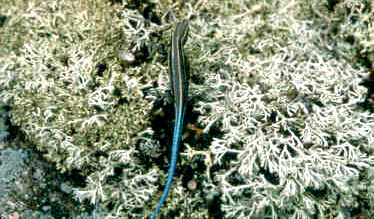Lizards
Five-lined Skink
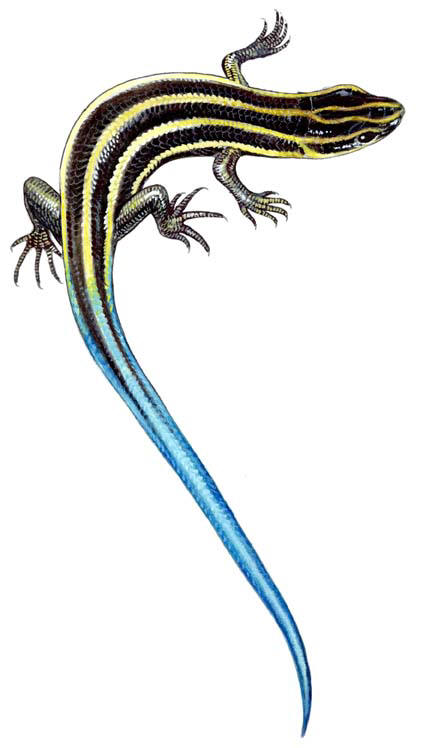 Plestiodon fasciatus
Plestiodon fasciatus - Length is 5-8" (12.5 - 21.5cm)
- Juvenile Five-lined Skink (right): black with five yellow/cream stripes; fading with age; brilliant blue tail; becomes grey with age
- Brilliant juvenile colours fade with maturity to brown/grey/olive base and the five white/yellow stripes darken so there is less contrast (below-left).
- Skinks may lose their tail to predators, but a new short grey tail will grow again.
- Male's develop a reddish/orange colouring on their nose and jaw (below).
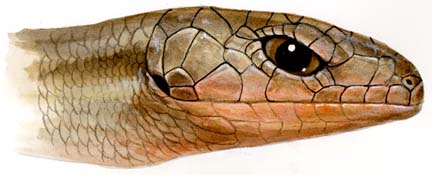
- Five-lined Skinks inhabit open deciduous forest or field habitats where sufficient debris is available, and rock outcrops often along on lakeshores.
- They eat invertebrates; large adults can even eat newborn mice and small frogs.
- SPECIAL CONCERN - Southern Shield Population
- ENDANGERED - Carolinian Population
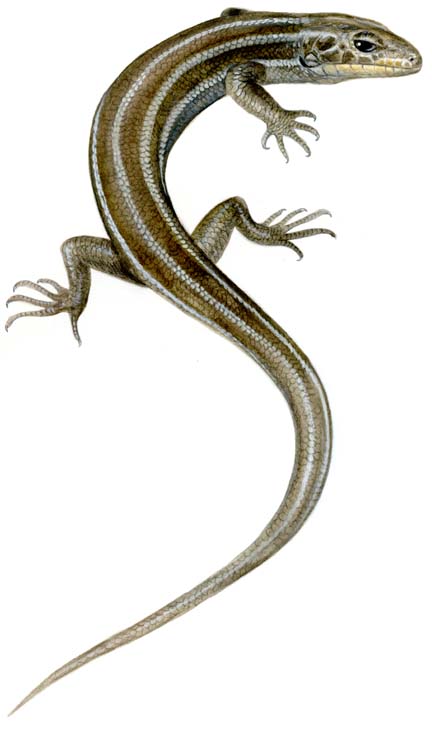
- Females construct a nest under flat logs/rocks. Nests may be shared by more than one female.
- 6-10 eggs laid in June or early July.
- Eggs hatch in 24-55 days.
- Hatchlings are brightly coloured; 3.5-6.4 cm long.
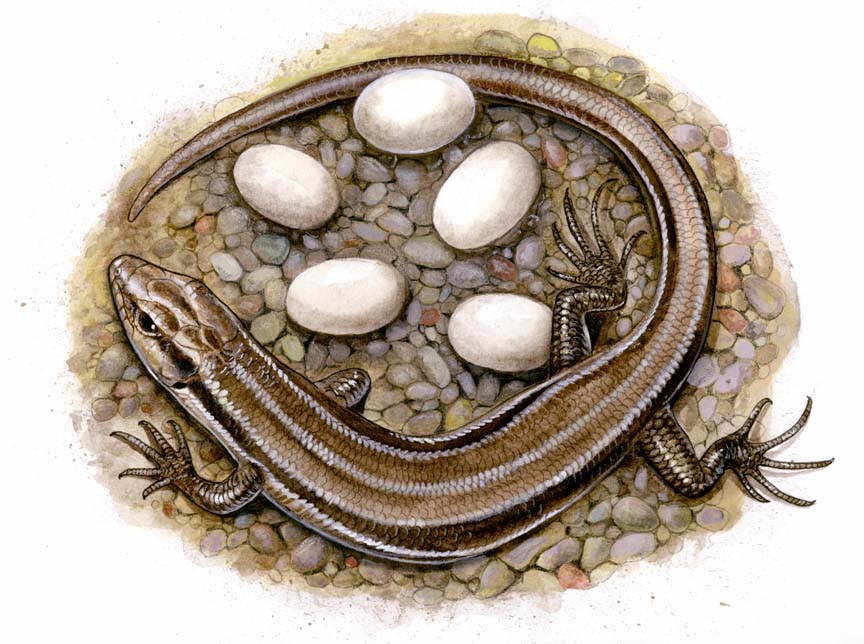
What's the difference. Lizard or Salamander?
- Salamanders are amphibians, lizards are reptiles. They both have long tails and four legs.
- Salamanders would quickly dry out if they lived in the hot, dry habitat that the five-lined skinks like.
- Lizards are covered in scales; very active; and can quickly move around the ground during the day.

- Salamanders have soft, moist skin, are slow moving, and remain under shelter during the day.

